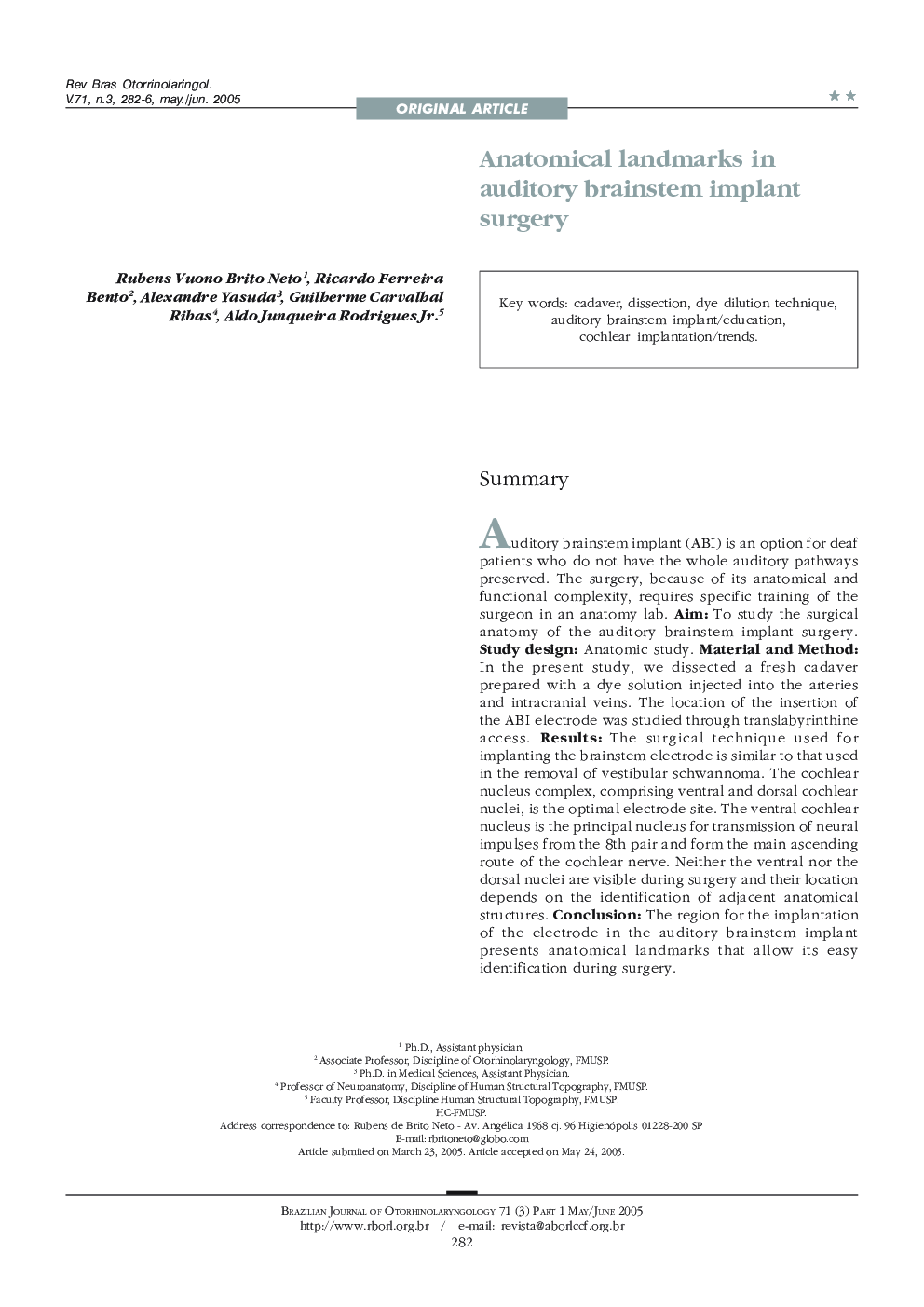| Article ID | Journal | Published Year | Pages | File Type |
|---|---|---|---|---|
| 10086929 | Brazilian Journal of Otorhinolaryngology | 2005 | 5 Pages |
Abstract
Auditory brainstem implant (ABI) is an option for deaf patients who do not have the whole auditory pathways preserved. The surgery, because of its anatomical and functional complexity, requires specific training of the surgeon in an anatomy lab. Aim: To study the surgical anatomy of the auditory brainstem implant surgery. Study design: Anatomic study. Material and Method: In the present study, we dissected a fresh cadaver prepared with a dye solution injected into the arteries and intracranial veins. The location of the insertion of the ABI electrode was studied through translabyrinthine access. Results: The surgical technique used for implanting the brainstem electrode is similar to that used in the removal of vestibular schwannoma. The cochlear nucleus complex, comprising ventral and dorsal cochlear nuclei, is the optimal electrode site. The ventral cochlear nucleus is the principal nucleus for transmission of neural impulses from the 8th pair and form the main ascending route of the cochlear nerve. Neither the ventral nor the dorsal nuclei are visible during surgery and their location depends on the identification of adjacent anatomical structures. Conclusion: The region for the implantation of the electrode in the auditory brainstem implant presents anatomical landmarks that allow its easy identification during surgery.
Keywords
Related Topics
Health Sciences
Medicine and Dentistry
Otorhinolaryngology and Facial Plastic Surgery
Authors
Rubens Vuono Brito Neto, Ricardo Ferreira Bento, Alexandre Yasuda, Guilherme Carvalhal Ribas, Aldo Junqueira Jr.,
